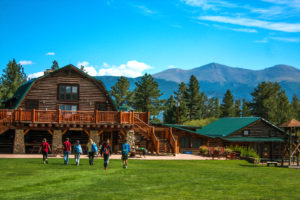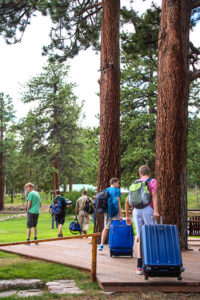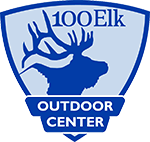
What to Bring
With mountain adventures come weather highs and lows, so come prepared by keeping our packing list in mind.

The 100 Elk Outdoor Center is located in a mountain environment with variable weather conditions all year. Please use the following list as a guide in preparing for your outdoor experience. Our weather varies from season to season, and even day to day. So, making sure you bring the proper clothing and footwear is important.
Our packing list takes into consideration all the weather conditions you may be exposed to while here, but please call us with any questions regarding gear or weather forecasts for your trip. If you check the weather for Buena Vista prior to your arrival, take note that it may be a few degrees colder on property since we are at a higher elevation than town. For more info on weather and gear, read our tips below.
Remember: Dressing in layers is the best way to stay comfortable in the high country.
Packing List
The Essentials
- Sleeping bag (no linens provided)
- Pillow
- 1 pair of waterproof hiking boots or snow boots
- 1 pair of tennis shoes
- Warm coat or parka
- Rain jacket
- Sweaters or sweatshirts (fleece or synthetic fabric is preferred)
- Warm gloves or mittens (2 pairs is best)
- 1 warm hat
- 1 sun hat
- 2 T-shirts (long sleeve or short sleeve)
- Underwear
- Long underwear
- 3 pairs of warm socks
- 2 pairs of athletic or long pants (horseback riders must bring jeans!)
- 1 pair of shorts (depending upon weather)
- Towel and washcloth
- Warm pajamas or sleepwear
- Toothbrush and toothpaste
- Soap, shampoo, hairbrush
- Sunscreen (minimum SPF 30)
- Lip balm (SPF 15)
- 2 water bottles
- Bandana
- Flashlight or headlamp
- Daypack
Lake Activities (Canoeing, Rec Time)
- Water shoes or sandals
- Large beach towel
- Swimsuit (if your school allows swimming — you will need to check with your school)
Horseback Riding
- 1 pair of jeans
- 1 pair of tall socks
- Cowboy boots (if you own them — otherwise we have a variety of sizes to borrow)
Optional Items to Consider
- Camera
- Slippers (for cabin only)
- Sunglasses
- Binoculars
Things to Leave at Home
- Pets
- Firearms
- Fireworks
- Knives larger than 3 inches
Packing List (PDF Version)
Packing Tips
Weather
The mountain environment of 100 Elk is characterized by frequently changing weather conditions. In general, count on nighttime temperatures being cool, usually ranging in the 20s to low 50s. The daytime highs, however, can range anywhere from the 60s to low 90s in the warmer months and 30s to 50s in the winter months. Short afternoon thunderstorms do occur regularly, and it can also snow any time in the fall, winter and spring so you’ll want to be prepared for this possibility.
Layering
You’ll spend most of your time outside at 100 Elk, so layering is an excellent way to stay warm or cool down. Simply put, dressing in several light layers rather than one heavy layer allows you more flexibility as the weather and your activity level changes. Wool and newer synthetic fabrics are ideal for this environment as they insulate and retain heat even when wet.
Footwear
We ask participants to bring a sturdy pair of hiking boots or shoes to wear for activities. The paths around property are mostly gravel and dirt, so we recommend shoes you don’t mind getting a little dusty and dirty. In the late fall and spring, there could be snow on the ground during your stay, so bring waterproof or snow boots. A pair of slippers in the cabin is also helpful to keep your feet cozy and warm.
Extras
You might consider bringing an alarm clock to be on time for the day’s events or a camera to capture the scenery. If you are going to use a phone as an alarm, there are a limited number of outlets in each cabin or room so be prepared to share if your cabin is full. Most participants also find a flashlight helpful for walking to and from activities at night.
Bedding
Students and chaperones stay in heated log cabins with wooden bunk beds. Linens are not provided for outdoor ed programs, so be sure to pack a warm sleeping bag and pillow. If you want to bring a pillow, set of twin sheets, and blanket instead, you are welcome to do so. But, the majority of our participants prefer to use a sleeping bag.
